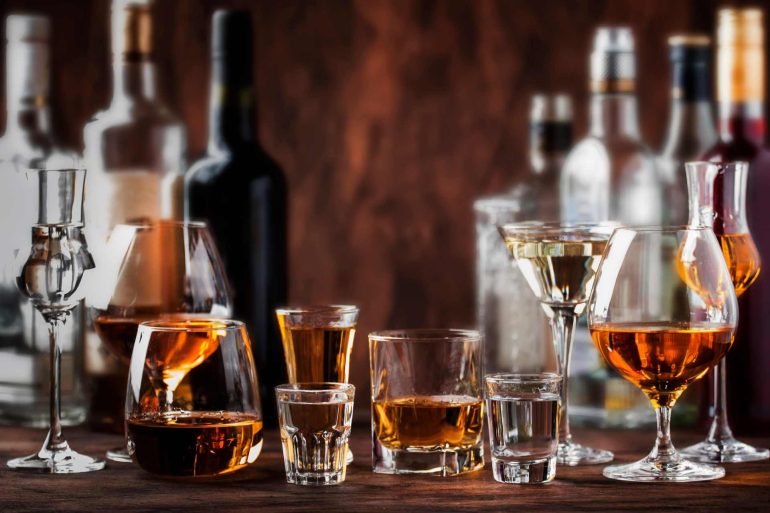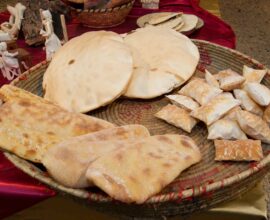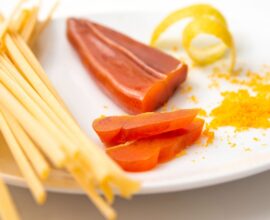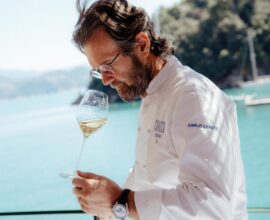It’s not all about wine: soft drinks, spirits and liqueurs from Sardinia
In addition to wine, the island’s traditional spirits and liqueurs
Sardinia boasts countless typical traditional products that recount the authenticity of the territory.
Sardinia preserves a thousand-year-old winemaking tradition born thanks to the fertile soil, the Mediterranean climate and the native vines, such as Cannonau and Vermentino, true flagships of these lands.
The cellars, here, are absolute “temples of oenology”, where robust red wines and fresh whites tell the story of the authenticity of the territory.
But that’s not all: in addition to the wines that have made it internationally famous, the island is a treasure trove of Traditional Agri-Food Products, the so-called PAT, i.e. all those products characterised by processing, preservation and maturing techniques that have been consolidated over time and that are followed homogeneously throughout the region and according to traditional rules for at least twenty-five years.
Thus we find cheeses that have always been central to the Sardinian economy, fresh pasta, typical breads, desserts made for special occasions and traditional feasts, delicious sausages as well as non-alcoholic drinks, spirits and liqueurs.
A journey through Sardinian drinks, spirits and liqueurs
It is precisely on Sardinian soft drinks, spirits and liqueurs that we want to focus on today, we’ll tell you what they are and how they are made.
Let’s start with the Acquavite, (File e ferru, Abba ardente, Filu ‘e ferru), produced throughout the region has been known and consumed by Sardinians for centuries. It used to be artisanally made, in the distilleries of home cellars where there would also have a space for its sale.
When a State Monopoly law forbade home production, there was a period in which families continued to make it at home and, to escape controls, the distillate was stored in glass bottles buried in the vegetable garden and tied with an iron wire which, sticking out of the ground, it allowed them to be found.
It is a drink with a high alcohol content, colourless, obtained from the process of double distillation of wines/marc at a controlled temperature.
Today, the marc is stored and taken to authorised distilleries where combined with wine, it is subjected to the double distillation process using stills: the body of the distillate constitutes the brandy, which is kept in oak barrels and remains to mature for about a year.
Next up is the ‘Bevanda di Genziana’ (Gentian Drink) which was born in the mountain areas of Sardinia and which, in the past, was used to counteract malarial fevers.
It is produced with gentian, a typical plant that grows in mountain meadows and pastures and which contains digestive and medicinal properties.
In general, the preparation takes place in a traditional cellar following this procedure: 20-30 grams of gentian roots are washed carefully and then boiled in 1.5 litres of water. It is then left to refine until the volume is reduced to half a litre, filtered and decanted into glass bottles or steel containers.
Another unmistakable product is Binu De Arangiu (Orange Wine), originally from Sarrabus, a sub-region in south-eastern Sardinia, and in particular from the municipalities of Muravera, San Vito Villaputzu and Castiadas.
The peasant tradition values nature’s finest products and proud Sardinians obtain from it delicacies to be offered to relatives and friends in convivial moments. In this case, the freshness of orange juice is encapsulated by its fermentation to make it into an alcoholic drink and harmonise its flavours through ageing.
Binu de Arangiu, today is produced only by a few families for their own consumption, it is an alcoholic beverage obtained from the pressing and fermenting the juice of Tardivo blond oranges from San Vito and from umbilical oranges such as Washington and Tarocco. After harvesting, the juice is pressed and stored in earthenware containers or other suitable material, at a temperature between 21-22 degrees, aiding fermentation with the addition of sugar or honey.
At the end of the fermentation process, it is decanted into wooden barrels, terracotta or glass containers and kept in a cool environment, for a period ranging from 36 months to 5 years. Ageing gives the product a delicate flavour tending to fruity with a texture similar to passito wine. After that, it is stored in glass bottles with sealed caps.
In the central-southern area of the island, we find wild thistle liqueur (Likori de gureu), a straw-yellow alcoholic drink, with a pleasantly bitter taste, traditionally prepared in home kitchens according to the ancient recipe in which the alcoholic base is pure marc brandy, without any flavourings.
Wild thistles (gureu) are harvested fresh in the spring, cleaned of the outer film and thorns and then infused in brandy for at least 30 days, after which the extract is filtered and the liqueur can be consumed. Sometimes, it may contain a piece of thistle as an infusion.
Throughout the region, we find the Prickly Pear Sapa which was prepared by the poorest families as a substitute for grape must Sapa and has been a product known for at least a hundred years. It is a thick, light brown liquid that is obtained by prolonged cooking of the pulp and juice of the prickly pear fruits, which is used in the preparation of desserts.
During the month of September, the ripe prickly pears are harvested, peeled and squeezed by hand and then cooked for half an hour to facilitate the detachment of the seeds from the pulp.
They are then filtered with a jute sack, and then cooked over low heat for at least 6 hours. To flavour the sapa, winter air-dried orange peel and a fresh bunch of wild fennel inflorescences should be added during boiling. The liquid juice is refined until it becomes thick: once it has reached the ideal density, cooking is stopped and the product is left to cool and then stored in glass bottles closed with corks.
Finally, in Villacidro, in the province of Cagliari, we have Villacidro Murgia Giallo, a semi-sweet liqueur flavoured with saffron, and Villacidro Murgia Bianco, a semi-sweet liqueur anise flavoured.
In 1885, the chemist and pharmacist Dr Gennaro Murgia founded the steam distillery of Commendator Gennaro Murgia in Villacidro and, in the wake of the success of his spirits on the national and foreign markets, he developed a series of new liqueur products including Villacidro Giallo and Bianco.
The first is a liqueur at 40°C, semi-sweet, with a sugar content of about 15%, deep yellow, transparent, bright, flavoured with a traditional blend of 25 botanicals, while the second is a liqueur at 40°C, semi-sweet, anise-flavoured (similar to Greek ouzo), with a sugar content of about 15%, Colourless, transparent, and flavoured with a traditional blend of 20 botanicals.
Forte Village’s Michelin-starred restaurants are a temple of taste
The ideal choice to enjoy a holiday in Sardinia in the name of comfort, luxury and the excellence of food and wine is Forte Village, an award-winning resort in Santa Margherita di Pula a few steps from a pristine beach lapped by the crystal clear sea, which offers a selection of starred restaurants where you can taste the best of traditional Sardinian cuisine and gourmet cuisine (combined with renowned Sardinian wines) for unforgettable experiences to discover the typical products of the island between tradition and innovation.
Do you want to experience a dream holiday full of flavour, wellness and fun in a true paradise? Discover the Forte Village Resort in Sardinia






